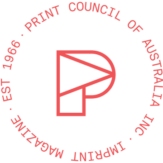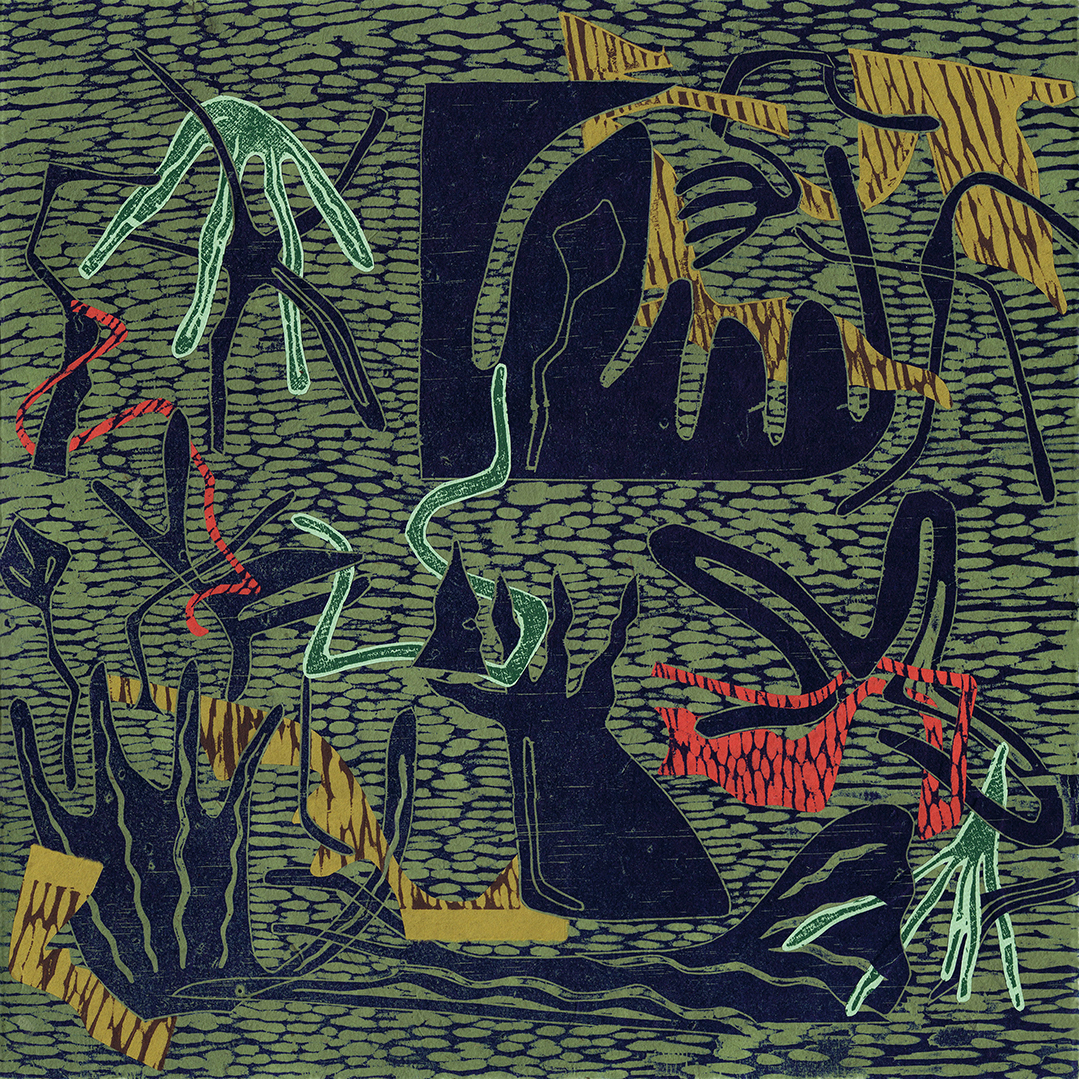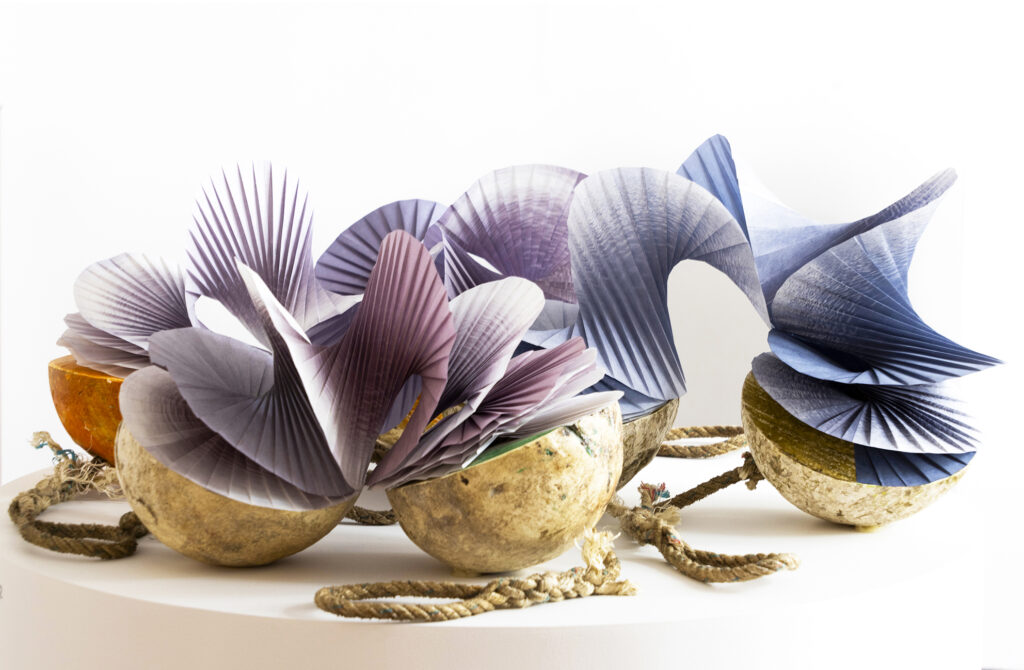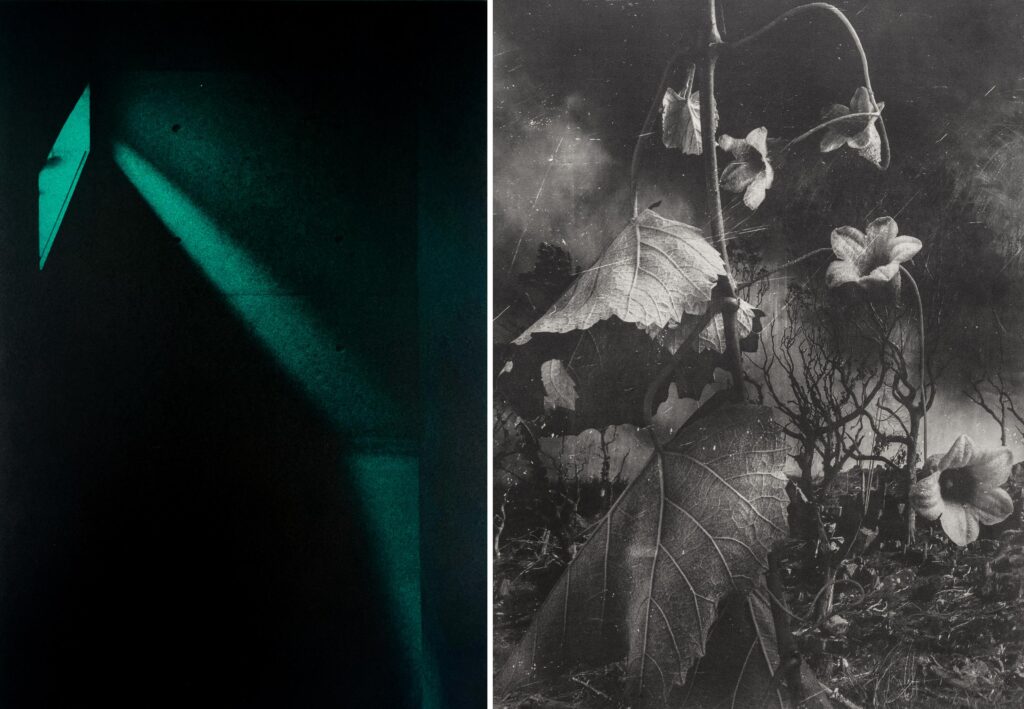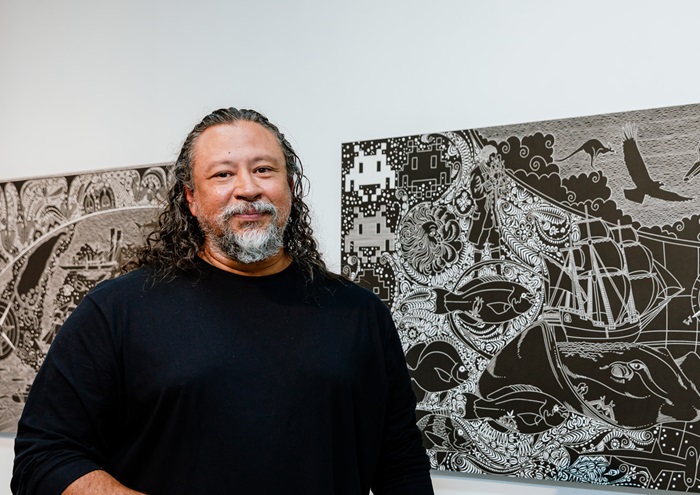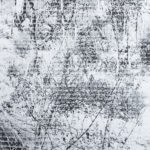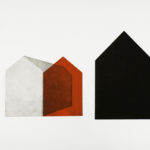Above:
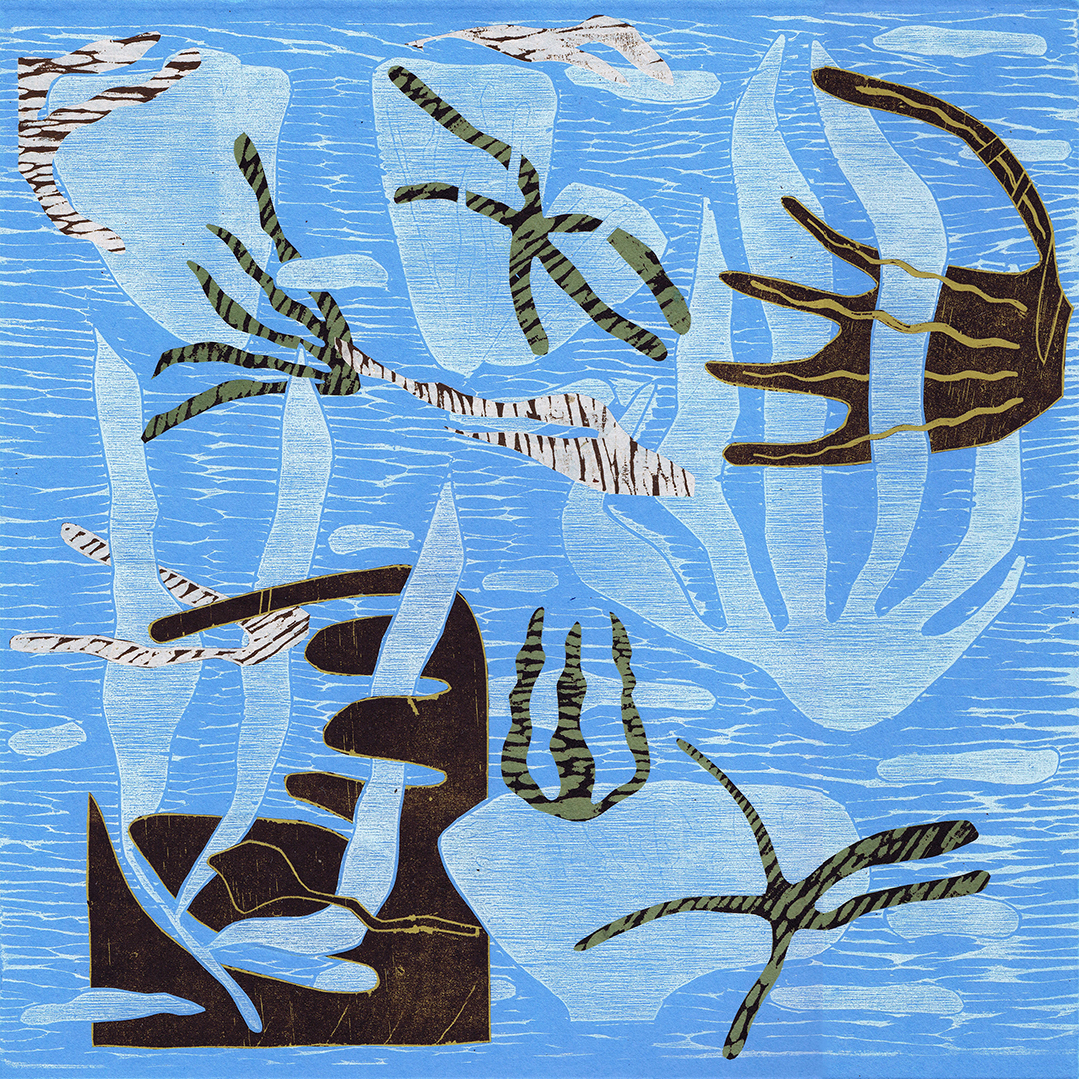
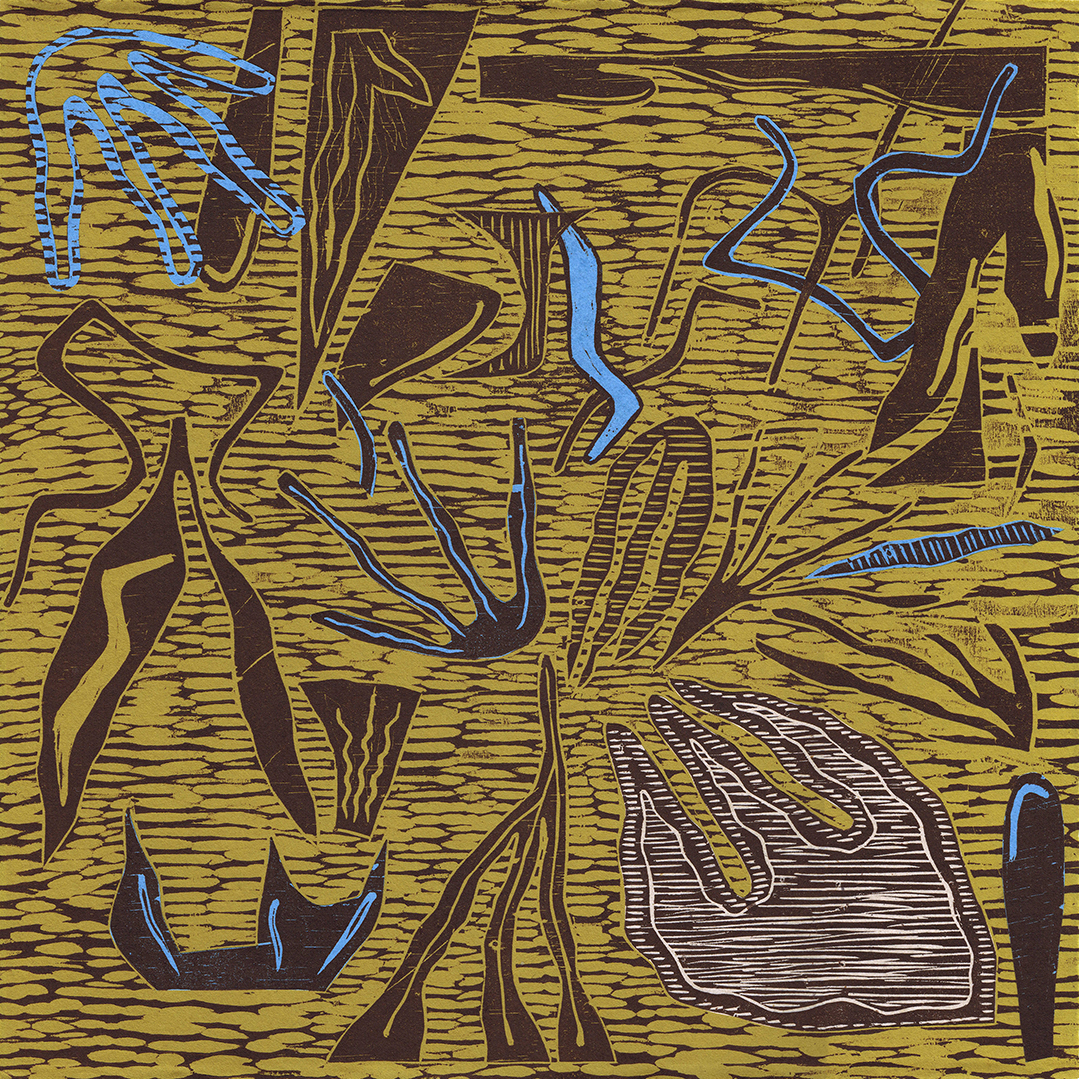
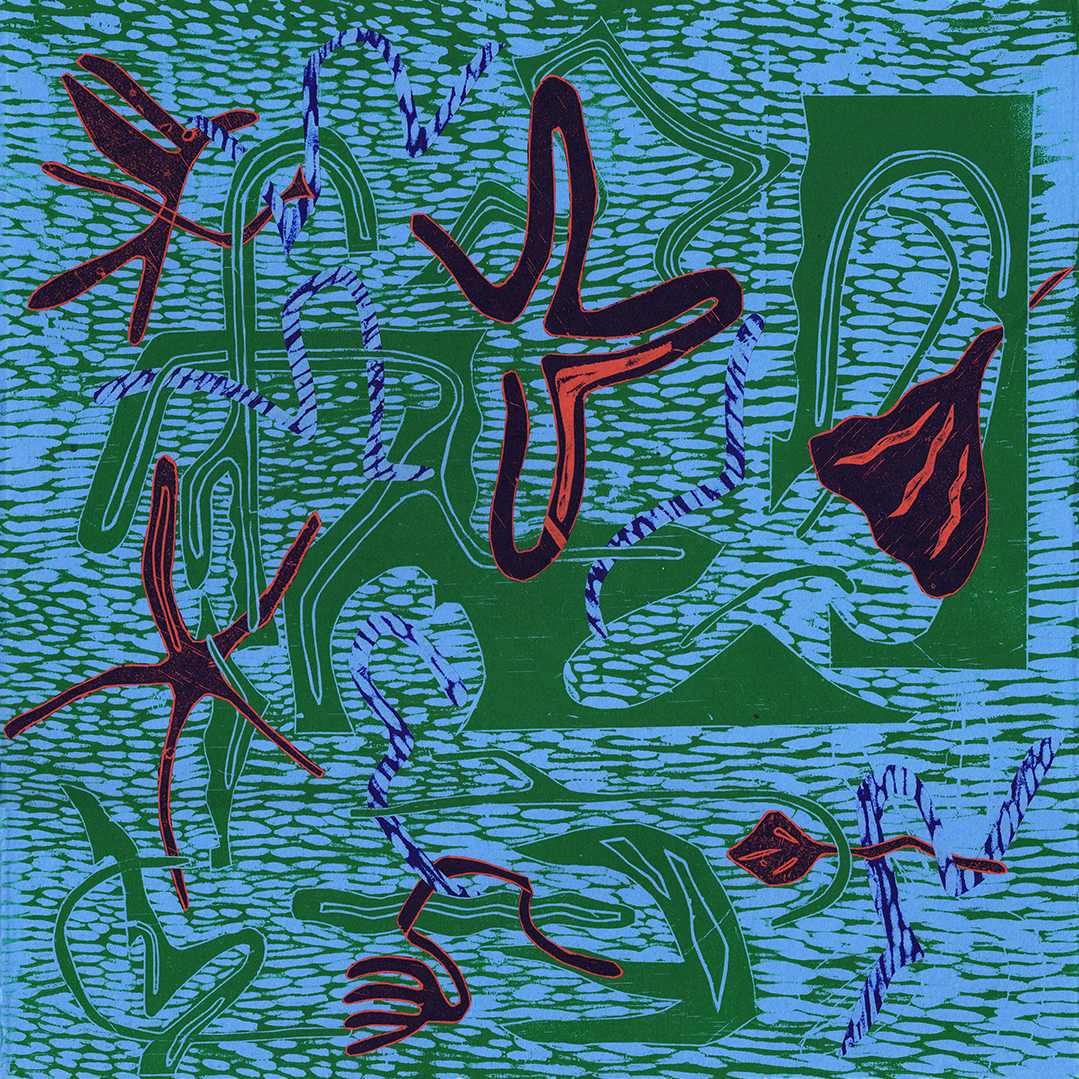
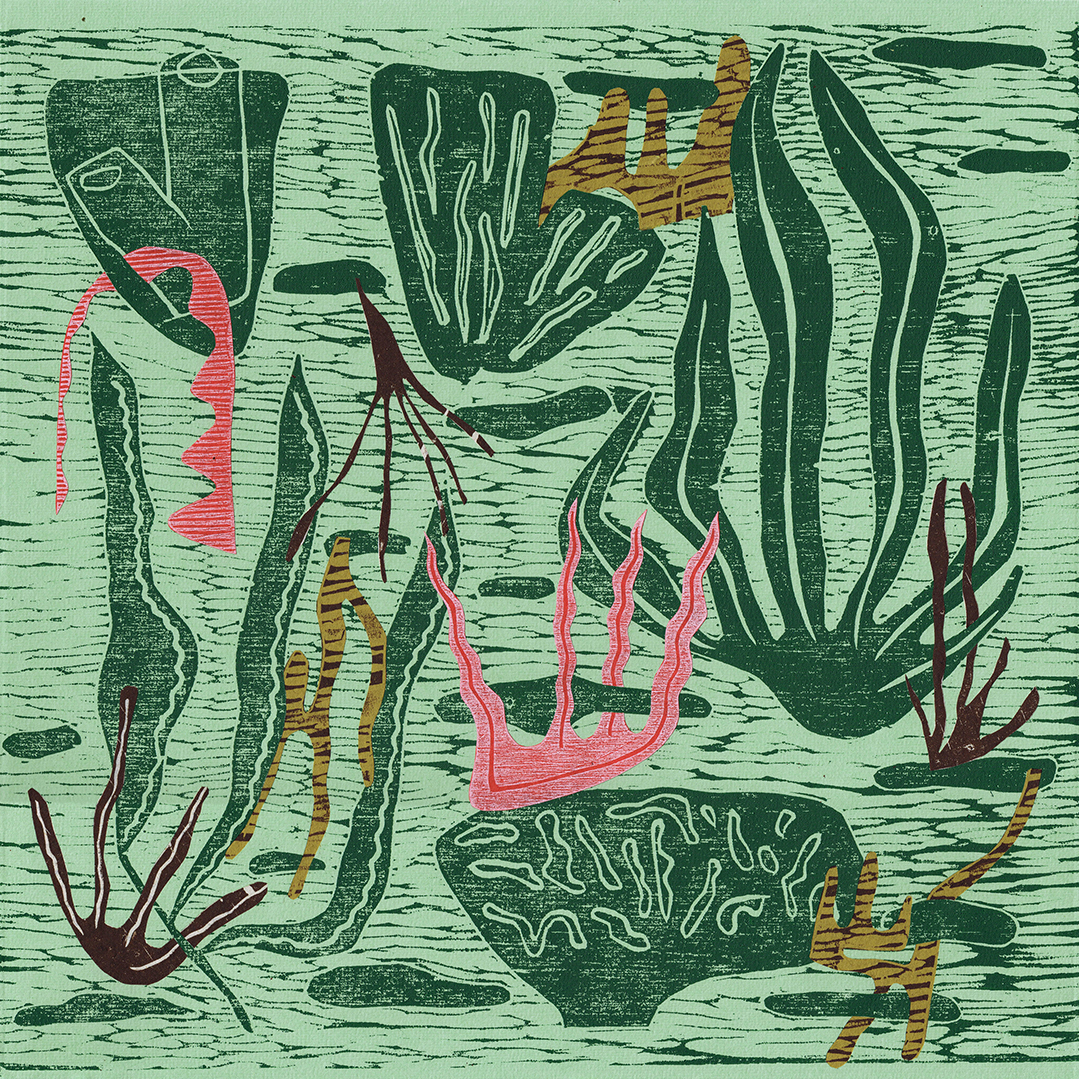
Q: What were some of the foundation ideas for this exhibition project?
A: This body of work originated from a reading by Astrida Neimanis called Hydrofeminism: Or, On Becoming a Body of Water from the book Undutiful Daughters: New Directions in Feminist Thought and Practice edited by Henriette Gunkel, Chrysanthi Nigianni, and Fanny Söderbäck.
I found this reading in my third year of university and became wrapped up by the way Neimanis described our human bodies as not purely singular in the ecosystem but as part of a large network of other life forms (animal, plant, bacteria) where water circulates, dissolves, and transfers between us all. With this concept I began imagining prints where elements overlapped with one another, currents passed through sections, and the printed texture of woodblocks could represent the watery currents of a steady stream. Print became my vehicle to visualise these watery connections as the woodblock itself is a plant material and so is the paper. The transference of ink between them is an act of circulating from one body (woodblock) to another (paper). The transfer is an act of touch and pressure from the press, a sensitive instrument that feels the two surfaces and transfers the ink between them.
Q: How did the artwork selection take place?
A: When making a body of work I make lots of prints simultaneously. Firstly, I take a trip to MES in Fairfield to select coloured papers for my colour palette. I then begin cutting out shapes of paper with a utility knife. I often listen to music as I create but I also look through books about plants and underwater landscapes. One of my favourite books to look through is Reef by Ken Done. His vibrant seascapes occupy a space that straddles the line between figurative and abstract art, aligning with the creative territory I enjoy exploring in my own artwork. I find inspiration in the various shapes I see in these books and use them as a reference point for cutting out my own original shapes. I collage these cutouts together to make a composition. Once I have made a composition with cut paper I transfer it to the woodblock and carve. When I began printmaking I was averse to the look of carved texture you get when you carve a large area but as time has passed I’ve begun to appreciate the way background carved texture can create movement in my image. It’s a trace of my time spent carving the block.
Q: How does the exhibition manifest – what do visitors experience?
A: When observing all the works together viewers will feel a current between the works, a common watery thread. The works flow into one another because the carved background texture floats behind the imagery as a current passing from one print to the next. You can see shapes that are borrowed from one print appearing on the next, circulating around the room. The prints are weaved and entangled with one another, they are reliant on each other for harmony in the composition.
Q: What are some of the key works and what subject matter do they deal with?
A: One of the first works I finished was Sponging. This work is quite figurative in that it directly represents seaweed, sponges, and seagrass. The composition is reminiscent of looking directly underwater if you were to wear a snorkel on a reef. With Sponging I was thinking literally of bodies that live in water.
I began to explore more abstract shapes with Flow. Thinking more about the movement of water from one body to another more in a gestural way than a figurative way. Some of the shapes began to fit around each other and create balance in the composition.
Gulp became an important piece for this collection of works as the abstraction complimented the more identifiable elements such as sea stars. The non-representational elements of the print allow the audience to immerse themselves in a realm of personal interpretation, inviting a dialogue with the artwork that extends beyond the confines of explicit representation.
Q: What is it about the printmaking experience that you most appreciate?
A: Printmaking is a sensitive and tangible medium. When you carve a woodblock you are sculpting an image that must be felt by the press in order to transfer to the paper.
It’s captivating that the woodblock was once part of a tree, it was a part of its own ecosystem that lived, breathed, and absorbed water. Part of this tree has become a flat matrix that can be printed through the press which feels the grooves of carved spaces and the subtle wooden texture of the grain. The ink is the viscous material that records the act of transference, a moment of touch between the woodblock and the paper. The image gets transferred from one plant material to another and the ink records this. The resulting paper print serves as a testament to this intricate process of transference, akin to the way water flows among various entities in the natural world, including bodies, plants, bacteria, and the topography of the environment.
—
Watery Bodies is at Brunswick Street Gallery, Melbourne, until 3 December www.brunswickstreetgallery.com.au www.vivienneadeney.com
—
Join the PCA and become a member. You’ll get the fine-art quarterly print magazine Imprint, free promotion of your exhibitions, discounts on art materials and a range of other exclusive benefits.
